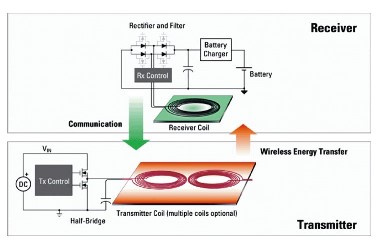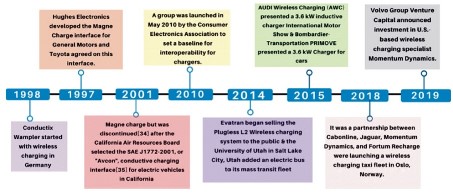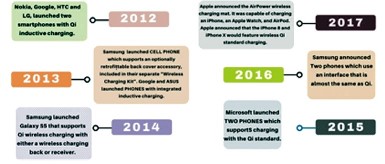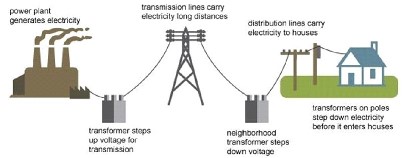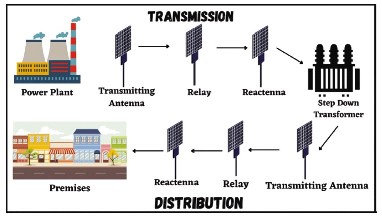Abstract
This paper discusses the importance of Wireless Power Transfer (WPT) in a rapidly changing world. The goal is to introduce new technologies that can transfer power without the hassle of connecting cords for every single work, making devices more portable with less wear and tear, and providing an uninterrupted supply of electricity in every region. Wireless Power Transfer plays a key role in bringing change to the usage of the latest or pre-existing technology with a lot of conveniences and within a short time. The paper sheds light on recent progress in Wireless Power Transfer techniques, wireless charging, new possibilities for the future in the field of Wireless Power Transfer, and the development of business merchandise. This technique has provided promising ways to overcome the energy restriction of conventionally transportable devices. The techniques of Wireless Power Transfer will provide a way of making the dream come true of supplying 24/7 electricity not only in cities but also in remote areas, which will help in the development of every village and town that is currently not in the mainstream. The paper provides a summary of Wireless Power Transfer techniques, major developments in technical fields, and the recent advancements in networking applications. It highlights the potential of Wireless Power Transfer to revolutionize the way to use technology and the benefits it can bring to individuals and countries.
Keywords:
- Wireless Power Transfer
- Wireless Charging
- Inductive Coupling
- Resonance Coupling
- RF/ Microwave
- Standard Charging
- Dynamic Charging Qi
- PMA
- A4WP
- WiTricity
- Microwave
- ISM
Introduction
With the rapid emergence of new technologies and continuous advancements Wireless Power Transfer (WPT) has emerged as a promising and captivating technology. While the concept of Wireless Power Transfer and wireless charging may seem new, it was first planned by Nikola Tesla, known as the father of wireless, in 1891 (Tesla, 1900). Tesla conducted the first Wireless Power Transfer experiment in his experimental station in Colorado. The receiver operates on a principle similar to that of radio receivers, where the device needs to be in proximity to the transmitter. Wireless power is also referred to as Inductive Power Transfer (IPT), Inductive Coupling, and Resonant Power Transfer (RPT) (Agbinya, 2012 ; Mamoukaris & Economides, 2003).
The technology of Wireless Power Transfer is paving the way for wireless power transmission and distribution, replacing traditional methods. Wireless charging, a subpart of Wireless Power Transfer, is rapidly evolving from theory to reality, with features being implemented on industrial products such as mobile phones and other portable devices ( Wankhede, 2021; Mccormick, 2015).
1. Wireless Power Transfer (WPT)
Wireless Power Transfer is a process of transmitting electrical energy without the use of physical wires (Agbinya, 2012). The system comprises a transmitter device powered by a power supply that generates a time-varying magnetic field, which then transmits power to a receiver device. The receiver device then draws power from the magnetic field and supplies it to an electrical load (Zhao et al., 2012). With the elimination of wires and batteries, Wireless Power Transmission technology provides convenience and safety to users, while also increasing the durability and comfort of devices. It is particularly useful for electrical devices where connecting physical wires may pose safety hazards or be inconvenient. This technology is also known as wireless energy transmission.
2. Classification in Wireless Power Transfer
2.1 Near Field / Non-Radiative Technique
The Near Field technique involves transferring power over a short range of distance using different methods, such as inductive coupling or capacitive coupling to join the electrodes. Inductive Coupling is the most commonly used technology in Wireless Power Transfer. Applications of inductive coupling include charging mobile devices, Radio Frequency Identification (RFID) tags, electric toothbrushes, cooking induction, and medical devices such as artificial cardiac pacemakers and electric vehicles (Shinohara, 2014). Figure 1 shows the classification of the wireless charging techniques and is further categorized into two types, such as Inductive Coupling and Magnetic Resonance Coupling.

Figure 1. Classification of Wireless Charging
2.1.1 Inductive Coupling
Norrie (1901) mentions that electricity is transferred between coils through magnetic field induction. Inductive Power Transfer (IPT) occurs when the primary winding of the transmitter produces a varying field across the secondary winding of the receiver, inducing a voltage/current across the secondary winding of the energy receiver through near-field magnetic power (Zhao et al., 2012). The induced voltage can be used to charge wireless devices and storage systems. The operating frequency for inductive coupling is usually within the kHz range. The secondary winding must be tuned to the operating frequency to enhance charging efficiency. The issue with using higher-quality factors is that because the transferred power attenuates, the standard values are usually small (below 10). Due to the limited quality factors, the charging distance is typically only 20cm. Inductively coupled Radio-Frequency Identification (RFID) is an example that increases the charging distance to tens of centimeters, albeit with diminished efficiency and received power in a small watt range (Zhao et al. 2014) Despite the limited transmission range, the effective charging power is very high. Its implementation is simple, convenient, and highly efficient in close distances (typically within a coil diameter), with ensured safety. Therefore, it is widely applicable and suitable for mobile devices. Figure 2 shows the working principle of inductive coupling.

Figure 2. Working of Inductive Coupling
2.1.2 Magnetic Resonance Coupling
Magnetic resonance coupling is a technique that involves the transfer and generation of power between two resonant coils (Yuan et al., 2010). When two coils operate at the same resonant frequency, they are strongly coupled, allowing for high-energy transfer with minimal loss to non-resonant externalities. For instance, a model was used to determine the maximum power transfer efficiency of 92.56% at a distance of 0.003 m. The resonance property also provides immunity to nearby environments and line-of-sight transfer requirements. Previous demonstrations of magnetically coupled resonators have shown the ability to transfer power over longer distances than inductive coupling, with much higher power efficiency than Radio Frequency (RF) radiation methods (Valtchev et al., 2009). Moreover, resonance coupling can be applied between one transmitting resonator and multiple receiving resonators, allowing for the simultaneous charging of many devices. As resonance coupling typically operates at a higher frequency, the quality factors are usually high. With increasing distance, the quality factor helps to reduce the sharp decrease in coupling constant and thus charging efficiency. In 2007, scientists at the Massachusetts Institute of Technology (MIT) proposed a highly efficient medium-range Wireless Power Transfer technology called WiTricity, which is based on strongly coupled resonance (Comsol, 2017). It has been reported that the technology can power a 60W bulb at a distance of up to 2 meters with a transmission efficiency of around 40%, and the efficiency increases by 90% when the transmission distance is about 1 meter. However, reducing the size of a WiTricity receiver is challenging because it requires a distributed impedance coil to operate (Zhu et al., 2008). Implementing WiTricity technology in portable devices poses challenges. Resonance coupling allows for charging multiple devices simultaneously. Figure 3 shows the magnetic resonance coupling.

Figure 3. Magnetic Resonance Coupling
2.2 Far-Field / Radiative Technique
The far-field technique, also known as radioactive technique or power beaming, uses a beam of electromagnetic radiation, such as a laser beam, to transfer power over long distances. The beam must be directed toward the receiver for efficient power transfer. This technique is applicable in wireless power transmission for drone aircraft. Although this method is fast and easy and has the potential to make everything wireless, it is limited by the issue of exposing people and other living beings to potentially harmful electromagnetic fields. The far-field Wireless Power Transfer can be further subcategorized into two types, which are described as follows,
2.2.1 RF / Microwave Radiation
Radio Frequency (RF) radiation utilizes microwaves or RF waves as a medium to transfer energy. Microwaves can propagate over long distances, generally in a line of sight. However, alternative electromagnetic waves like infrared and x-rays can also be used for energy transfer, although they are not widely used due to safety concerns.
The transmission process starts with the conversion of Alternating Current (AC) to Direct Current (DC) at the transmitter end, followed by the conversion of DC into RF via an electron tube. The RF/microwave waves propagate through the air and are captured by the receiver antenna. The captured waves are then converted back to electricity through an RF-to-DC conversion process. The efficiency of the RF-to-DC conversion process depends on the power density at the receiver antenna and the accuracy of the impedance matching between the antenna and the charge port. Inductive charge paddles, available in two sizes, Small Paddle Inductive (SPI) and Large Paddle Inductive (LPI) are often used for charging electric vehicles.
The Magne Charge system was designed to be safe to use even in the rain and has been tested to operate fully submerged in water. Figure 4 shows the working principle of RF/microwave radiation.

Figure 4. Working of RF/Microwave Radiation
2.2.2 Laser
Laser technology uses electromagnetic radiation that is near the visible range to transmit power by converting electricity into a laser beam, which can be received and passed to photovoltaic cells (Smith, 2009). This process is known as "power beaming." Photovoltaic laser power converters are present at the receiver side, which are designed for the conversion of monochromatic light. Laser power beaming is applied in the development of various sensors. Consumer laser systems must meet laser safety requirements that are standardized under International Electro technical Commission 60825 (IEC 60825) (Niotaki et al., 2014).
In 2018, a wireless system using a laser was developed that was able to provide power to all stationary and mobile devices present in a room while adhering to safety regulations. However, due to its hazardous nature and low efficiency, its application is limited. Figure 5 shows the working of laser technology.

Figure 5. Working of Laser Power Transfer
Table 1 presents a summary of the different Wireless Power Transfer techniques, including their power, efficiency, distance, multicast, and mobility.
Table 1. Comparison of Wireless Power Transfer Techniques
3. Wireless Charging
Inductive charging, also known as conductor charging, uses an attractive induction force to transfer power wirelessly to portable devices (Ulrich, 2020). A charging pad with an AC passing through an induction coil produces a dynamic magnetic flux, which induces an AC within the coil of the portable device (Armagnat & Kenyon, 1908).
3.1 Working of Wireless Charging
Wireless Power Transfer involves the transmission of energy from a transmitter to a receiver (Dipert, 2019). The process begins with converting DC electricity from the source into high-frequency AC energy, which is used to energize a copper wire coil in the transmitter. An alternating magnetic field is generated as the AC flows through the coil, which can then come into contact with the receiver to induce a current through its coil. This method of energy transfer between the transmitter and receiver is known as magnetic or resonant coupling (Chuang et al., 2019). Figure 6 illustrates the working of both the transmitter and receiver sides of wireless charging.
Figure 6. Working on Wireless Charging
3.2 Advantages
- Wireless charging is a secure method since the charging process happens inside a closed environment and there are no cords involved, which means there is no risk of corrosion or electrical faults. It also provides universal compatibility, allowing different devices from different brands to use the same chargers.
- It enables the design and manufacture of smaller devices without the need for attached batteries, and it provides better product durability by making the devices dustproof and waterproof. It is also cost effective and flexible to use, providing power to charging devices in an on-demand fashion, making it both versatile and energy efficient (Frizell, 2014).
- Wireless charging is more durable since there is no need to plug or unplug the charger, which eliminates wear and tear in the phone's socket. Furthermore, when the phone is fully charged, the wireless charger cuts down the charging process, preventing overheating and reducing energy loss, thus providing safe charging (Yuan et al., 2010).
3.3 Standards
Standards are systems of operation that are adopted by devices. There are two main standards for wireless charging, Qi and Power Matters Alliance (PMA). Although the two standards operate similarly, they use different transmission frequencies and connection protocols, which means that devices compatible with one standard may not necessarily be compatible with the other. However, some devices are compatible with both standards.
3.3.1 SAE J2954
SAE J2954 offers three classes of charging speed, such as WPT 1, WPT 2, and WPT 3 with a maximum range of 7 kW, 7.7 kW, and 11 kW, respectively. This system operates on the principle of inductive charging and uses resonant inductive coupling, making it similar to wired chargers. The medium-speed charges are around 94%. The underlying resonance transfer technology was developed by Marin Soljacic at MIT, hence the derivative is named WiTricity. WiTricity led the standardization efforts which began in 2012 and have undergone two observer releases. It is assumed by WiTricity that J2954 charges will be offered as add-ons (Low, 2016).
3.3.2 Qi
Qi is a Wireless Power Transfer method that uses the induction charging method for distances up to 4 cm. The technology requires a charging station and a device, which is placed on top of the pad. The Qi standard, which first came into existence in 2008, has now been adopted by over 220 million smartphones and other electronic devices (Raval, 2022).
3.3.3 AirFuel Alliance
The AirFuel Alliance was formed in 2015 when Alliance for Wireless Power (A4WP) and PMA merged to develop a better wireless charging experience and to solve the existing limitations in wireless charging.
3.3.3.1 Power Matters Alliance (PMA)
The Alliance for Wireless Power (A4WP) was a now-defunct organization that aimed to develop a wireless charging standard using magnetic resonance technology. It was founded in 2012 by Qualcomm, Samsung, Gill Industries, and other companies. In 2015, A4WP merged with the Power Matters Alliance (PMA) to form the AirFuel Alliance.
3.3.3.2 Rezence
Rezence is a wireless charging interface standard developed by A4WP that uses resonance principles for power transfer. It features a power transmitter and can support multiple receivers. The standard allows for power transfer up to 50W over a distance of 0.05m, with a transmission frequency of 6.78MHz. The Alliance for Wireless Power (A4WP) has also defined a low-energy link with Bluetooth for managing power levels, identifying valid loads, and protecting non-compliant devices. A4WP was founded in 2012 to establish a Wireless Power Transfer standard to compete with existing standard-setting organizations, including Broadcom and Gill Electronics.
3.3.4 ISO 15118
ISO 15118 is a global standard that defines the communication interface between electric vehicles (EVs) and the power grid. It enables bi-directional charging and discharging of EVs and provides plug-and-charge capabilities for the EV network. In essence, ISO 15118 facilitates vehicle-to-grid (V2G) communication, allowing for seamless and efficient integration of EVs with the power grid (Sullivan, 2018).
4. Applications of Wireless Power Transfer
4.1 On Transportation Sector
Figure 7 shows the advancement of wireless charging for electric vehicles.
Figure 7. Advancement in Wireless Charging of Electric Vehicles
4.1.1 Stationary Charging
In the inductive charging system, one of the windings is connected to the ground, so there is no risk of electric shock. This is one of the advantages of using inductive charging for automobiles.
4.1.2 Dynamic Charging
Researchers at the Advanced Institute of Science and Technology developed the Online Electric Vehicle (OLEV), an electric transport system where vehicles draw power from a supply installed beneath the paved surface. However, due to high costs and low efficiency, commercialization efforts for this technology have not been successful. Additionally, dynamic charging has been found to increase the occurrence of reflective cracks.
4.2 Medical Sector
This method is widely used in the medical sector to allow for the charging of medical implants and body sensors that are placed beneath the skin. Researchers are becoming more efficient in printing wireless power transmission antennas onto flexible materials that can be placed under the skin of patients. This means that devices placed under the skin to monitor a patient's condition may have a longer lifespan and monitoring periods, resulting in more accurate diagnosis from doctors. The technology has the potential to transform previously invasive instruments into safer options for patients. However, it is not yet clear if this technology is approved for use and extensive research is required to ensure the safety of these devices. Using flexible polymers is safer compared to rigid diodes. While these medical applications are highly specific, the high-speed power is being verified for broader applications.
4.3 Cell Phones
Smartphone makers have started incorporating the standard Qi technology in their products, and many have adopted wireless charging as a result. The widespread acceptance of this energy standard is driving other manufacturers to adopt it as their standard. The concept of "surface charging," involves building a charging pad directly into the surface of a table. On the other hand, Apple and Anker are exploring the concept of a dockbased charging platform. This consists of a charging station and small disks with small footprints. Additionally, the development of reverse wireless charging now allows portable devices to discharge their battery into any other compatible device. Figure 8 shows the advancement of wireless charging in cell phones.
Figure 8. Advancement in Wireless Charging of Cell Phones
4.4 Home Appliance
Wireless power technologies have made their way into our daily lives, including our home appliances. For instance, OralB electric toothbrushes use inductive charging technology, while Ikea offers a range of wireless charging furniture that supports the Qi standard. The emerging Qi conductor room standard aims to create a custom that enables safer, smarter, and more convenient kitchen appliances. This will ensure reliability and safety. The standard defines transmitters and flexible cooktops that wirelessly deliver up to 2200 watts of power to compatible kitchen appliances, which are then powered by inductive power transfer.
5. Need for Thermal Management in Wireless Charging
Wireless charging is one of the quickest, easiest, and most convenient methods of charging devices. However, this method can cause temperature fluctuations during charging, which can negatively impact performance and reduce battery life. The most significant challenge to address is ensuring the safety of the battery and optimizing efficiency by designing a cooling system. The larger the size of the battery used, the higher the current speed and the more heat generated. Several battery management methods include,
- Phase Change Materials (PCMs) are capable of absorbing heat by changing from a solid to a liquid state. They can absorb a significant amount of heat with just a slight temperature change, but this process results in a volume change.
- Fin Cooling involves the use of fins to increase the surface area, which in turn increases heat transfer. Fins have high thermal conductivity but add weight to the system.
- Air Cooling works by using the principle of air convection to absorb heat from the battery. Passing air over the surface of the battery cools it down. This method is simple and more economical than liquid cooling.
- Liquid Cooling uses coolants with higher heat capacity and conductivity than air. These systems are compact and highly efficient in terms of performance.
6. Tesla Coil
In 1899, Nikola Tesla developed the Tesla coil, which is based on an electrical resonant mechanism as shown in Figure 9. It is used to produce high voltage with low current and high frequency alternating current electricity (Tesla, 1914; Haller & Cunningham, 1910; Tesla, 1900). Tesla experimented with various combinations of coupled resonant electrical circuits consisting of two or three circuits. It uses these coupled circuits in its innovative experiments in electrical lighting, fluorescence, high frequency electrical energy phenomena, electrotherapy, X-ray production, and the transmission of current without wires (Corum & Corum, 2000). Tesla coil circuits were used in spark gap radio transmitters for wireless telegraphy until the 1920s, and in medical instrumentation like violet ray devices and electrotherapy. Nowadays, Tesla coils are mainly used for entertainment and educational displays, though small coils are used as leak detectors for high vacuum systems.
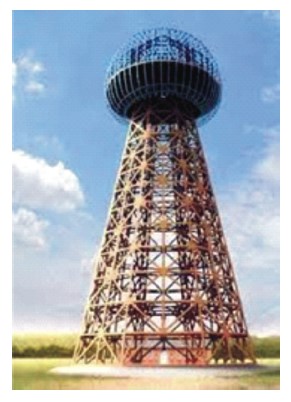
Figure 9. Tesla Coil
7. A RoadMap for Future Wireless Power Transmission and Distribution
Advancements in Wireless Power Transfer have been made possible due to advancements in material science and technology. These unique technologies change the existing methods and make distribution and transmission safe and reliable for domestic as well as commercial purposes. The existing power transfer system faces many issues such as inefficiency, weather interruptions, outages, and failure to provide electricity in remote areas (Dickinson, 1976)
- Efficiency is currently satisfactory in existing power transfer systems, but implementing Wireless Power Transfer can reduce various losses.
- Weather interruption is a common issue, especially during the rainy season, which can cause chaos and disruptions in life. However, by using Wireless Power Transfer, we can eradicate these problems and achieve 24/7 electricity everywhere.
- Outages are periods during which power is lost due to interruption or failure in the supply of power. For both power-critical businesses and electricity distribution firms, outages are significant cost drivers. The existing solution to this issue is generators, but they are expensive, noisy, and causes pollution. This downtime and cost can be eliminated by using a fixed or mobile outage system.
- The failure to provide electricity in remote areas especially in the final stage of the distribution network, is a significant issue. Electricity is often economically unavailable or expensive in rural areas. The Wireless Power Transfer is capable of providing a solution to this problem, which is significantly less expensive to install and maintain as compared to existing power lines or microgrid solutions (Khalid, 2017).
7.1 Deployment of Expensive Infrastructure in Difficult Terrain
Remote areas, such as islands and offshore wind farms, often rely on underwater cables, which require expensive installation and maintenance of submarine cables. This cost can be prohibitive, resulting in a lack of electricity supply to many parts of the world. In these cases, Wireless Power Transfer can be a more cost-effective solution, reducing the overall installation cost and making the electricity supply economically viable. Figure 10 shows the wired electricity supply premises (Armagnat & Kenyon, 1908).
Figure 10. Wired Electricity Supply on Premises
To address the aforementioned issues, long-range wireless power transmission, and distribution can be utilized. This can be achieved by using beams or waves in the ISM (Industrial, Scientific, and Medical) band, which typically utilize frequencies found in Bluetooth, Wireless Fidelity (Wi-Fi), and RFID technologies. The point-to-point transmission method is used, which beams power directly between two points, resulting in minimal radiation around the beam compared to existing high-voltage wire transmission. The low-power laser safety system ensures that the transmission beam immediately stops if any object, such as birds or helicopters, reaches the main beam, preventing contact with any objects other than clean air. This reduces electrocution risk compared to wired lines and minimizes weather and other wire-related interference-related outages. Climatic changes, such as rain, fog, or dust, have negligible impact on this technology.
To achieve long-range power transfer, three primary components are required, transmitting antennas, relays, and rectennas as shown in Figure 11. Transmitting antennas made of metamaterials will exhibit beams of microwave following the ISM band frequency. The beams from these antennas will be used for point-to-point transmission. Relays will be placed between these antennas to extend the distance over which energy can be transmitted. Finally, rectennas, which are rectifying antennas, will be used to convert the transmitted microwave beams into electrical energy.
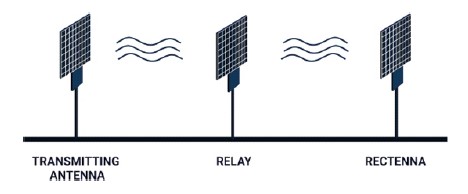
Figure 11. Tesla Coil
Figure 12 illustrates the wireless distribution of electricity to the premises using the long-range power transfer components.
Figure 12. Wired Electricity Supply on Premises
7.2 Working
Electricity generated from the power plant will be stepped up and then sent to the transmission antenna. At the transmission antenna, the electrical energy will be converted into microwave radiation using beam forming
Electricity generated from the power plant will be stepped up and then sent to the transmission antenna. At the transmission antenna, the electrical energy will be converted into microwave radiation using beamforming technology and transmitted via the transmitting antenna to the rectenna. This system will work at a single frequency of 5.8GHz. Metamaterials, which are composite media with unique electromagnetic properties, will be used in both the transmitting antenna and rectenna. These metamaterials are created using subwavelength building blocks, mostly metal-based. A relay will be used between the transmission antenna and rectenna to extend the distance over which the energy can be transmitted.
After reaching the rectenna, the microwave signal will be converted back into electrical energy. The electrical energy will then be stepped down for distribution to homes, offices, commercial buildings, and other required places using the same methods used during transmission. Firstly, the electrical energy will be sent to the transmission antenna where it will be converted into microwave radiation and directed towards the rectenna. At the rectenna, it will be converted back into electrical energy and distributed to the required places.
Figure 13 shows the coverage and size of the components. This technology allows a 1-square-meter transmitter to send about 10 kW of power up to a distance of 10 meters, while a larger 40-square-meter transmitter can provide a range of approximately 30 kilometers.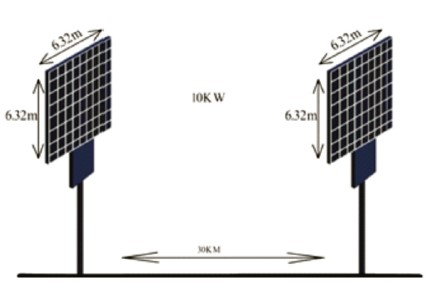
Figure 13. Coverage and Size Expected of Components
7.3 Advantages
- The meta-material technology and wireless power transmission beam shaping are responsible for creating collimated beams that can safely transmit power over long distances.
- The technology reduces the risk of electrocution associated with wired systems and has significantly lower infrastructure and maintenance costs.
- Wireless power transmission encounters fewer failure points compared to wired systems, and interference due to weather and other physical aspects will not result in outage issues.
- Climate changes such as rain, fog, dust, and pollution have a negligible impact on the soon transmission and distribution of power using this technology.
- It helps in reducing the carbon footprint on the environment and supports sustainable energy.
- Replacing cables passing through underwater and wildlife reserves reduces the impact on the environment and human footprint.
7.4 Future Scope
The technology of Wireless Power Transfer has the potential to revolutionize various sectors of life, making them hassle-free. It is the first step towards building smart cities, wireless trains, portable essential devices, and smart vehicles that eliminate air pollution. Wireless Power Transfer ensures maximum efficiency and zero loss.
Conclusion
Wireless Power Transfer (WPT) is a promising technology that has the potential to provide uninterrupted and portable electricity to electronic devices, eliminating the need for corded connections. This technology has significantly developed over the past decades and continues to introduce various user-friendly applications. This paper presents a comprehensive study of the paradigm of Wireless Power Transfer and Wireless charging. The integration of Wireless Power Transfer with existing communication networks create new opportunities as well as challenges for resource allocation. This paper has shown solutions to existing problems by providing seamless Wireless Power Transfer through the deployment of suitable point-to-point antennas, resulting in a 24/7 electricity supply in every nook and corner of the globe.

